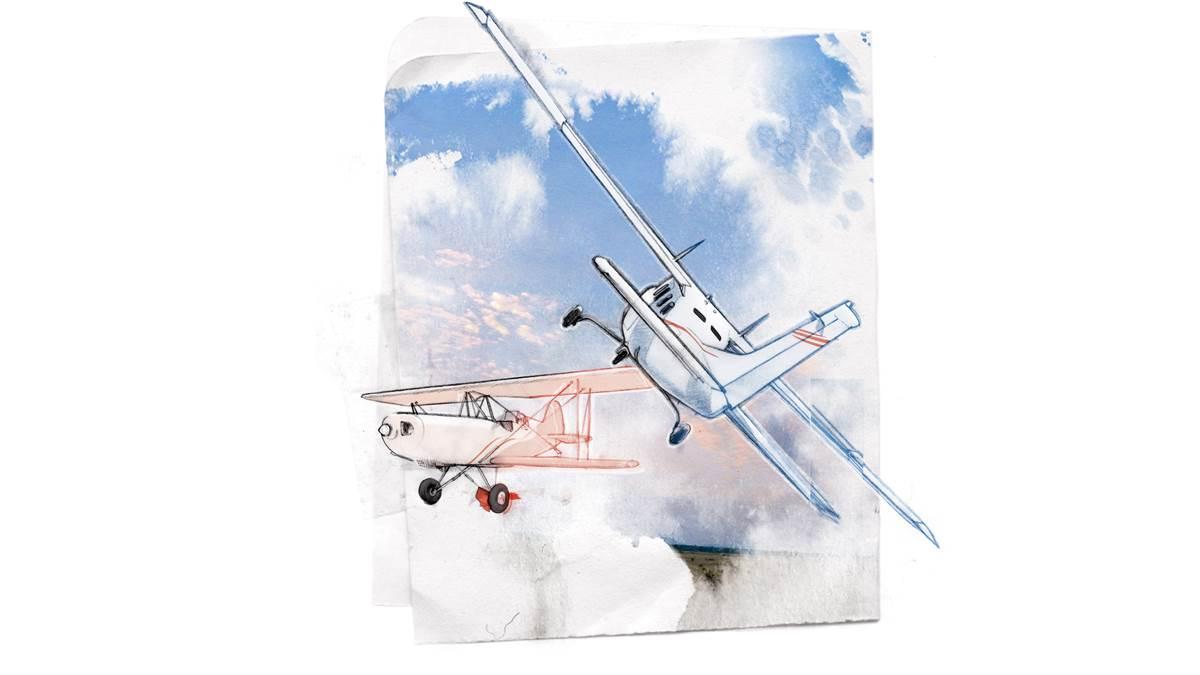Never Again: A cloud on the runway
Near-miss in Nevada
By Dale Brown
It was a beautiful early morning mid-summer day at Carson City, Nevada. My son Hunter and I were scheduled to fly an Angel Flight West mission in a Cessna P210 to pick up a patient from Silver Springs, Nevada, and transport her to Palo Alto, California. Because the patient was under age 18, I needed another adult on board, so I tapped Hunter for the task.

I learned there was just one airplane in the pattern as I taxied out—a biplane Light Sport aircraft doing touch and goes. The winds were out of the south at four knots, so I announced I was taxiing to the calm-wind Runway 27. The LSA pilot was using Runway 9 until I announced, so he switched to Runway 27 and commenced doing landings on 27.
I taxied to the runup area, completed my checklists, and taxied to the Runway 27 hold line as the biplane turned final for landing. The LSA’s approach to landing looked normal. I lost sight of the LSA atop my high wing as it headed west down the runway, so I waited to hear the pilot announce his crosswind turn, and then I’d taxi out and launch.
I waited and strained to see what was going on. There was no announcement if the LSA was doing a full stop or touch and go. I waited.
Then I saw a large cloud of dust bloom out from the south side of Runway 27, approximately midfield. I immediately got on the common traffic advisory frequency and said, “Aircraft landing at Carson, are you OK?” No response.
I thought about taxiing across the runway and heading down taxiway Alpha to where I last saw the LSA, but then I saw the airplane lift off. Hmm, I thought: OK, nothing happened. I waited until I could no longer see the LSA, and I heard no other announcements from him for several long moments, so I announced I was taking off on Runway 27. I taxied onto Runway 27 and did a normal full-power takeoff.
I was no more than 100 feet above ground after takeoff when I found myself nose to nose with the biplane LSA. The pilot was lining up to land on Runway 9 just moments after I lifted off of Runway 27.
I did a steep turn to the right, held it until I heard the stall warning horn, then leveled out. The LSA passed off to my left just a few yards away. I could clearly see a large black object lodged in the airplane’s landing gear. There was not one word on the radio from the LSA’s pilot.
I guess I was just so flummoxed by what just happened that I stayed off the radio and executed a normal pattern exit to the east. There was nothing on the Carson CTAF frequency until several minutes later when someone reported they were inbound for landing and the airport was reported “Closed.” I headed east to Silver Springs, picked up my passenger, and completed my Angel Flight West mission. I found out later that the black object in the LSA’s landing gear was a taxiway sign that the LSA ran into during the touch-and-go roll.
I didn’t think that much about the incident until I briefed my Civil Air Patrol (CAP) squadron about the event at an annual ground school class for CAP pilots preparing for our annual Form 5 checkrides (a mandatory flight review conducted every year).
I should have waited a few minutes longer to determine absolutely where the stricken airplane was and what he was doing. But he wasn’t talking on the radio, so it was tough to figure out what to do. I was on an Angel Flight West mission, so I was definitely under the “get the mission done” mentality. My drive was to launch the Angel Flight mission no matter what. I could have waited a few minutes and sort out what was going on. Lesson learned.
Dale Brown lives in Incline Village, Nevada. He has written numerous aviation novels and is a mission pilot for the Civil Air Patrol.


